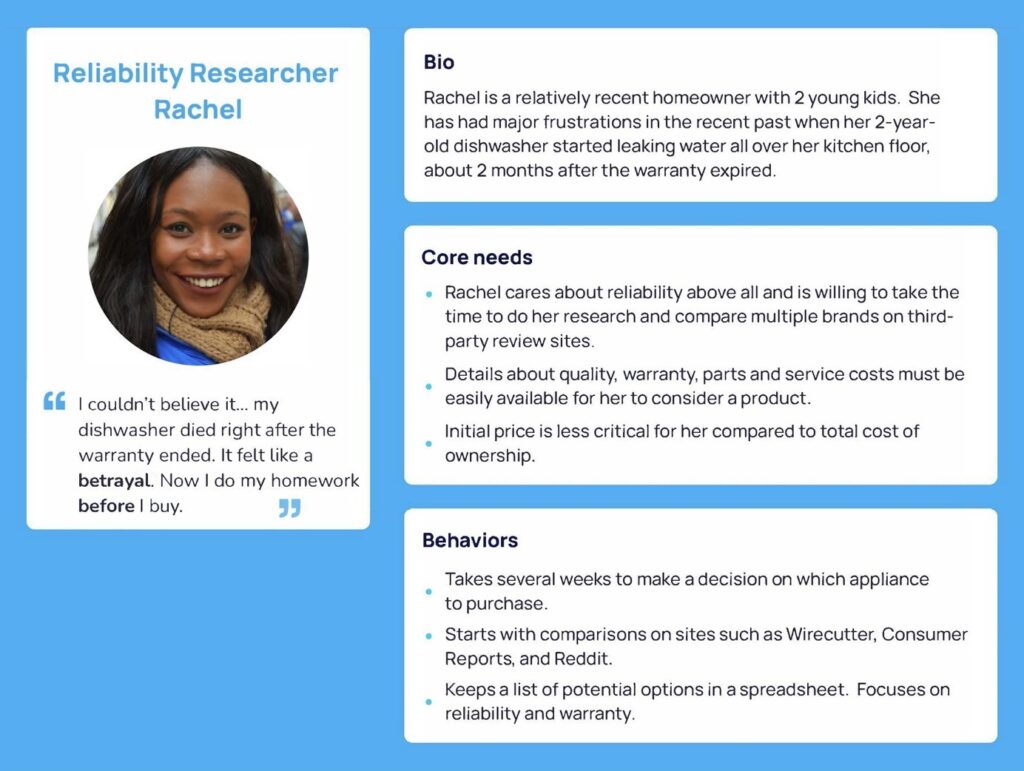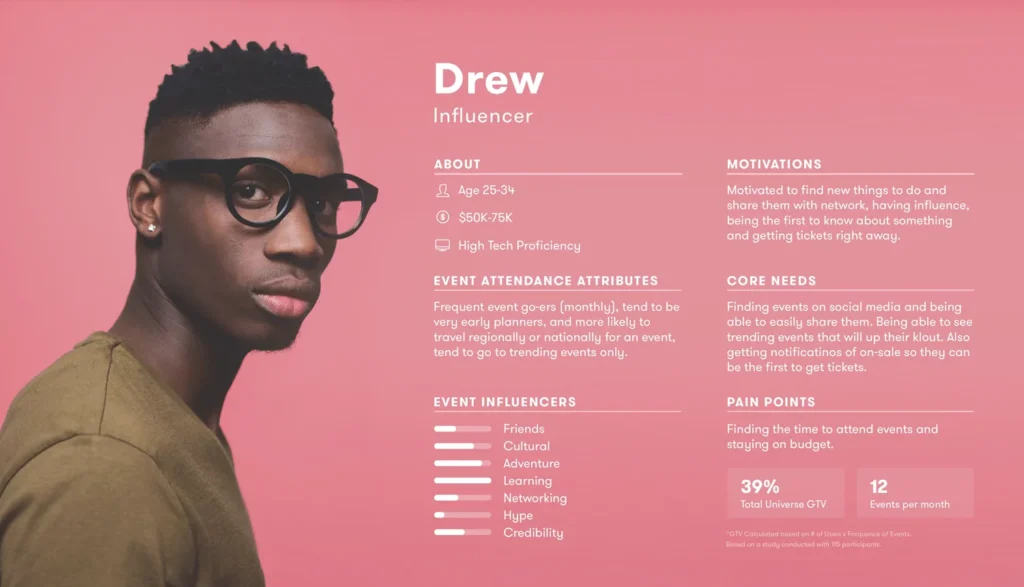User Personas in UX Design: When Are They Useful?

Some designers view personas as a key tool for inspiring empathy for your users, while others argue that they’re overrated and unnecessary. What are some common problems with user personas, and how can designers ensure they’ve created one that’s useful?
Of all design deliverables created by User Experience (UX) designers, few spark as much disagreement as user personas. A Google search for user personas in UX design reveals descriptions ranging from extremely valuable to completely useless.
But what are user personas? Why are professional designers sometimes skeptical of their value? And is it possible to use them effectively? Let’s take a look.
What Are User Personas?
User personas are fictional, archetypal representations of a certain type of target user of a product or service. They exist to document research findings. The better you know the tasks, needs, and frustrations of your target audience, the more realistic and effective your user personas.
User personas are designed to be shared with team members to inspire empathy for members of a particular audience segment and to motivate design decisions that solve pain points faced by that audience.

Source: Personas vs Archetypes
If a product or service has multiple customer segments with different customer journeys and distinct needs and goals, it can be helpful to create a persona for each group.
When Do Personas Lack Value?
Documenting and sharing user research insights and inspiring empathy for target users sound like useful goals, yet many argue against involving user personas in UX design. What characteristics lessen their value?
When They Contain Assumptions
Design teams often begin research projects with assumptions about their target users. In fact, teams will sometimes create what’s known as a proto persona to make these assumptions explicit before beginning research.
Proto personas are fine, as long as your team remembers the following:
- Always conduct thorough user research to validate or invalidate your assumptions
- Never allow unvalidated proto-personas to influence decision-making
Making decisions based on unvalidated assumptions actually decreases empathy. A failure to understand who you’re designing for leads to personas based on stereotypes, which means wasted effort building a product your audience doesn’t want and can’t use.
When They Highlight Irrelevant Information
Imagine a hypothetical scenario a user of a digital product might face. This is something design teams should be doing before creating a persona: generating scenarios that respond to very real and very specific pain points faced by your target audience and observed by your researchers.
Imagine your product is a poison control resource for pet owners. Alice, your target user, dropped two of her ADHD meds on the ground, and her labrador mix swallowed the pills before she could pick them up.
As she looks up safety information on her prescription before deciding what actions to take, which of the following descriptions are relevant to Alice completing this task?
- 34 years old
- Lives in Seattle, WA
- Fitness instructor
- Earns $65,000 a year
- Favorite brands are Apple, Nike, and Fitbit
- Extrovert
- Infrequent social media user
- Takes her three-year-old labrador mix jogging twice a week
- Distracted and worried by her dog’s pacing and trembling after ingesting the pills
Only the final two points in this list matter, right? The dog’s breed, age, and health might influence the action Alice takes, and her anxious state impacts her ability to concentrate on your product’s interface and information.
Yet most example personas tend to be bloated with meaningless demographic details.

Source: 50 must-see user persona templates
According to UX Researcher Indi Young, demographic details actually make user personas in UX design less convincing. Demographics “cause assumptions, shortcuts in thinking, and subconscious stereotypes by team members.”
When They’re Designed at the Wrong Fidelity
A Google search for user personas mostly brings up high-fidelity graphics resembling core portfolio deliverables.

Source: 50 must-see user persona templates
But polishing user personas to a portfolio-ready level is a waste of effort. You’re probably aware that UX design is an iterative process; this is no less true of user research.
User personas reflect your team’s current understanding of your target audience. Each time a new research session uncovers new insights about what motivates your users, adjust your personas to reflect this new understanding.
Sharing high-fidelity personas with other teams signals that your knowledge of your target user is complete, when in fact it’s ever-evolving.
How to Create Meaningful User Personas
So can user personas in UX design remain meaningful? Yes, provided you follow four important rules.
1) Build From a Specific Scenario
Your user should be facing a specific problem that prevents them from reaching a specific goal.
2) Reflect Actual Research
Personas should share real insights uncovered by speaking to target users and observing the problems they face in context.
One powerful way to communicate these insights is to include meaningful quotes from research sessions.
“There is nothing better than a choice quote that encapsulates what people are feeling and communicates it clearly. But too often, I see personas using obviously fabricated quotations to communicate what a persona should say, rather than what an actual person did say.” – Christian Ronan, Type/Code
If you’re not sure what your target user would say given a certain scenario, conduct more research.
3) Skip the Demographic Details
When adding details to your user persona, make sure they’re specifically relevant to the scenario you’ve established. Your persona’s salary might matter when completing the onboarding process of a financial investment app, for example. Or your persona’s ethnicity could affect the process of filtering out conditioners inappropriate for their hair texture while shopping for beauty products.
But whenever demographic details aren’t vital to your scenario, leave them out.
4) Stay Minimal, Low-Res, and Up-To-Date
Resist the temptation to create wordy, highly polished user personas. Instead, focus on emphasizing the goals, needs, and frustrations relevant to users when completing your chosen scenario.

Source: The Big Problem with Personas
Each time your user research team uncovers something new about the motivations behind your target audience’s behavior, update your personas to reflect that knowledge.
Is Product Design Right for You?
If learning more about what motivates users of digital products and services sounds exciting, consider applying now to Flatiron School’s Product Design Bootcamp. You’ll learn the design skills you need to build a competitive portfolio and land your first job in the product design industry.
Not sure if you’re ready to apply? Download the syllabus to learn more about the skills you can acquire in our bootcamp, or check out our free Product Design Prep Work to explore the material we teach in the course.
Disclaimer: The information in this blog is current as of February 19, 2024. Current policies, offerings, procedures, and programs may differ.



